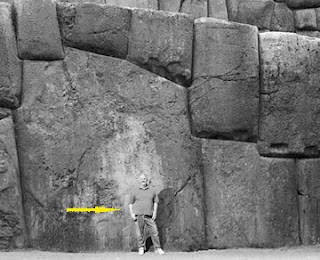
Hugh Nibley wrote that “The Book of Mormon mentions the rising and sinking of the land, forming new "hills and valleys" (3 Nephi 9:5-8)—with no mention of major mountain ranges.” (Nibley p 267)
Mountain peaks are measured not only by elevation (height above sea level), but also by prominence, that is, the prominence of a peak is the height of the peak’s summit above the lowest contour line encircling it and no higher summit.
In Central America only two mountains with prominences over 10,000 feet exist, and only one is in Mesoamerica, Volcan Tajumutco, San Marcos, Guatemala; only one 7,000 feet, Volcan Tacana, only four are 6,000 feet, and one 5,000 feet, all in Guatemala. The highest elevation is Tajumutco at 13,845 feet, with Tacana at 13,343 feet, and half a dozen at 12,000 feet.
On the other hand, there are peaks in the Andes with more than 20,000 feet of clear prominence, with the tallest peaks in Peru being Huascaran at 22,205 feet, Yeruypaja, 21,709, Coropuna, 21,083, Cuzco, 20,945, Huandoy, 20,852, Ampato, 20,702, Salcantay, 20,574, Huancarhuas, 20,531, Pumasillo, 20,492 , Solimana, 20,068; plus there are 16 peaks in Chile over 20,000 feet; plus one in Ecuador—all from 20,000 feet to about 23,000 feet. Chile has 25 mountain peaks taller than the tallest in Central America; Ecuador has 11 peaks higher, and Peru has 16 peaks higher. In all, there are 102 mountain peaks in the Andean area that exceed 6,000 meters (19,700 feet)
 So when Nephi says there shall be mountains carried up (1 Nephi 19:11), the disciple Nephi said, a great mountain will rise over the city Moronihah (3 Nephi 8:10), and when Samuel the Lamanite says “there shall be many places which are now called valleys which shall become mountains, whose height is great" (Helaman 14:23), one can only wonder what Nibley is referring to when he says “with no mention of major mountain ranges.”
So when Nephi says there shall be mountains carried up (1 Nephi 19:11), the disciple Nephi said, a great mountain will rise over the city Moronihah (3 Nephi 8:10), and when Samuel the Lamanite says “there shall be many places which are now called valleys which shall become mountains, whose height is great" (Helaman 14:23), one can only wonder what Nibley is referring to when he says “with no mention of major mountain ranges.”Of course, it should be understood that Mesoamerica, as stated above, does not really have much in the way of mountains, let alone tall mountains “whose height is great.” So to qualify Mesoamerica as the Land of Promise, Nibley and other Theorists claim the scriptures say nothing about tall mountains, which is yet another disingenuous approach to the scriptures to prove an erroneous Mesoamerican model.



























